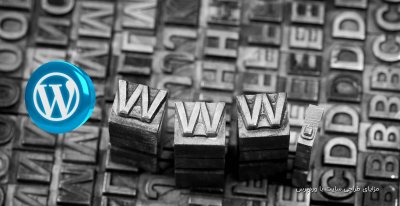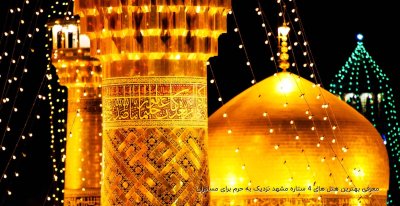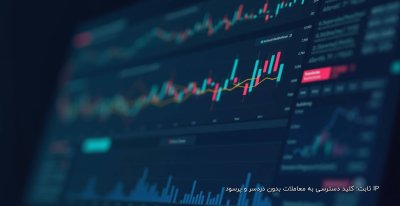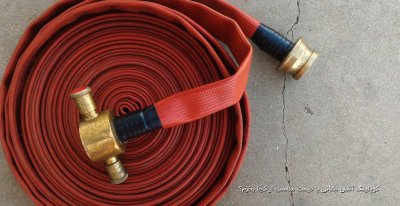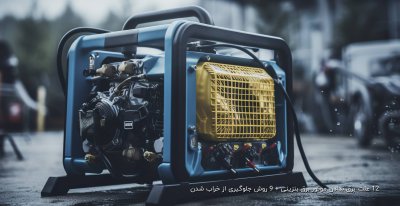هوش مصنوعی فارسی زال
Member
NFT art has revolutionized the way artists monetize their creations, transforming digital files into unique, tradable assets on the blockchain. With the rise of platforms like OpenSea, Rarible, and SuperRare, artists now have more opportunities than ever to reach global audiences and tap into a thriving market. However, choosing the right platform and understanding the minting process are crucial steps for anyone looking to succeed in the NFT world.
NFTs, or non-fungible tokens, are unique digital assets verified on the blockchain, ensuring the authenticity and rarity of digital files such as images, music, or 3D models. Unlike traditional digital art, which can be easily replicated, NFTs are one-of-a-kind. This uniqueness makes them highly desirable among collectors, who view these tokens as both a status symbol and a potential investment. With notable sales like Beeple’s $69 million NFT artwork, it’s clear that the potential for artists to profit from this technology is immense.
To get started in the NFT space, artists need to follow a few key steps. The first is setting up a crypto wallet, such as MetaMask, which is necessary for storing the cryptocurrency used to pay for minting fees. Minting, the process of creating an NFT, involves uploading a digital file to a marketplace and turning it into a token on the blockchain. Each platform has its own minting process, but the general steps are similar: connect your wallet, upload your artwork, and list it for sale.
Choosing the right platform is essential. OpenSea is the largest and most versatile NFT marketplace, supporting various types of digital assets and offering a “lazy minting” option, which allows artists to list their work without paying upfront fees. For high-end, single-edition pieces, SuperRare is an ideal choice, catering to serious collectors who value exclusivity. Rarible is another popular option, known for its community-driven governance and customizable smart contracts, which can be appealing for artists looking to have more control over their sales.
When deciding which blockchain to use, Ethereum is the most widely adopted for NFTs due to its well-established ecosystem and compatibility with major marketplaces. However, Ethereum’s high gas fees, which are transaction costs paid to process transactions, can be prohibitive for new artists. As an alternative, blockchains like Polygon and Tezos offer lower fees and faster transactions, making them attractive for creators looking to minimize costs. Tezos, for example, is known for its eco-friendly proof-of-stake model, which uses less energy compared to Ethereum’s traditional proof-of-work system, making it a popular choice for environmentally conscious artists.
Once the minting process is complete, promoting your NFT art is the next crucial step. Social media platforms like Twitter and Instagram are essential tools for artists to showcase their work, share updates, and engage with their audience. Building a strong personal brand helps increase visibility and establish trust with potential buyers. Participating in NFT communities on Discord and Reddit is another effective way to network, gain exposure, and learn from experienced creators.
Collaboration is a powerful strategy for boosting visibility and credibility. Partnering with other artists or influencers in the NFT space can introduce your work to new audiences. For example, the well-known artist Pak has successfully collaborated with multiple creators, launching community-focused projects that significantly boosted his profile and sales.
Listing your artwork on multiple marketplaces can also expand your reach. While focusing on a primary platform like OpenSea can build a solid reputation, minting exclusive pieces on other sites such as Foundation or SuperRare allows artists to tap into different collector bases. This approach not only maximizes visibility but also caters to diverse buyer preferences, which can lead to higher sales.
Timing your releases strategically can amplify interest and demand. Releasing new collections during peak activity periods or aligning with major events in the cryptocurrency market can lead to increased bids and attention. Promoting upcoming drops on NFT calendar websites like NFTCalendar.io can help build anticipation and attract collectors eager to acquire new pieces.
Another key aspect of success in the best NFT markets is optimizing your listings. Use descriptive titles, compelling backstories, and relevant tags to enhance discoverability. Buyers often search for specific themes or styles, so accurately labeling your art can make it easier for your work to appear in relevant searches.
Building long-term relationships with your collectors is equally important. Engaging with your audience through social media, sharing behind-the-scenes content, and providing updates on new projects can help cultivate a loyal community. Collectors appreciate artists who are active and transparent, which can lead to repeat sales and strong word-of-mouth promotion.
The future of NFT art is filled with exciting trends and innovations. Cross-blockchain compatibility, for instance, is becoming more prevalent, allowing artists to move their NFTs between different chains with ease. AI and generative art are also gaining traction, enabling creators to produce algorithm-driven works that evolve over time. Additionally, the integration of NFTs into the metaverse is transforming how digital art is displayed and experienced, creating immersive, interactive environments where collectors can showcase their collections.
For artists looking to build a sustainable NFT business, understanding these trends and staying adaptable is key. A successful NFT career involves continuous learning, strategic promotion, and active engagement with both the art and crypto communities. By leveraging the right platforms, optimizing your sales strategies, and maintaining authenticity, you can thrive in this dynamic and fast-growing market
NFTs, or non-fungible tokens, are unique digital assets verified on the blockchain, ensuring the authenticity and rarity of digital files such as images, music, or 3D models. Unlike traditional digital art, which can be easily replicated, NFTs are one-of-a-kind. This uniqueness makes them highly desirable among collectors, who view these tokens as both a status symbol and a potential investment. With notable sales like Beeple’s $69 million NFT artwork, it’s clear that the potential for artists to profit from this technology is immense.
To get started in the NFT space, artists need to follow a few key steps. The first is setting up a crypto wallet, such as MetaMask, which is necessary for storing the cryptocurrency used to pay for minting fees. Minting, the process of creating an NFT, involves uploading a digital file to a marketplace and turning it into a token on the blockchain. Each platform has its own minting process, but the general steps are similar: connect your wallet, upload your artwork, and list it for sale.
Choosing the right platform is essential. OpenSea is the largest and most versatile NFT marketplace, supporting various types of digital assets and offering a “lazy minting” option, which allows artists to list their work without paying upfront fees. For high-end, single-edition pieces, SuperRare is an ideal choice, catering to serious collectors who value exclusivity. Rarible is another popular option, known for its community-driven governance and customizable smart contracts, which can be appealing for artists looking to have more control over their sales.
When deciding which blockchain to use, Ethereum is the most widely adopted for NFTs due to its well-established ecosystem and compatibility with major marketplaces. However, Ethereum’s high gas fees, which are transaction costs paid to process transactions, can be prohibitive for new artists. As an alternative, blockchains like Polygon and Tezos offer lower fees and faster transactions, making them attractive for creators looking to minimize costs. Tezos, for example, is known for its eco-friendly proof-of-stake model, which uses less energy compared to Ethereum’s traditional proof-of-work system, making it a popular choice for environmentally conscious artists.
Once the minting process is complete, promoting your NFT art is the next crucial step. Social media platforms like Twitter and Instagram are essential tools for artists to showcase their work, share updates, and engage with their audience. Building a strong personal brand helps increase visibility and establish trust with potential buyers. Participating in NFT communities on Discord and Reddit is another effective way to network, gain exposure, and learn from experienced creators.
Collaboration is a powerful strategy for boosting visibility and credibility. Partnering with other artists or influencers in the NFT space can introduce your work to new audiences. For example, the well-known artist Pak has successfully collaborated with multiple creators, launching community-focused projects that significantly boosted his profile and sales.
Listing your artwork on multiple marketplaces can also expand your reach. While focusing on a primary platform like OpenSea can build a solid reputation, minting exclusive pieces on other sites such as Foundation or SuperRare allows artists to tap into different collector bases. This approach not only maximizes visibility but also caters to diverse buyer preferences, which can lead to higher sales.
Timing your releases strategically can amplify interest and demand. Releasing new collections during peak activity periods or aligning with major events in the cryptocurrency market can lead to increased bids and attention. Promoting upcoming drops on NFT calendar websites like NFTCalendar.io can help build anticipation and attract collectors eager to acquire new pieces.
Another key aspect of success in the best NFT markets is optimizing your listings. Use descriptive titles, compelling backstories, and relevant tags to enhance discoverability. Buyers often search for specific themes or styles, so accurately labeling your art can make it easier for your work to appear in relevant searches.
Building long-term relationships with your collectors is equally important. Engaging with your audience through social media, sharing behind-the-scenes content, and providing updates on new projects can help cultivate a loyal community. Collectors appreciate artists who are active and transparent, which can lead to repeat sales and strong word-of-mouth promotion.
The future of NFT art is filled with exciting trends and innovations. Cross-blockchain compatibility, for instance, is becoming more prevalent, allowing artists to move their NFTs between different chains with ease. AI and generative art are also gaining traction, enabling creators to produce algorithm-driven works that evolve over time. Additionally, the integration of NFTs into the metaverse is transforming how digital art is displayed and experienced, creating immersive, interactive environments where collectors can showcase their collections.
For artists looking to build a sustainable NFT business, understanding these trends and staying adaptable is key. A successful NFT career involves continuous learning, strategic promotion, and active engagement with both the art and crypto communities. By leveraging the right platforms, optimizing your sales strategies, and maintaining authenticity, you can thrive in this dynamic and fast-growing market



